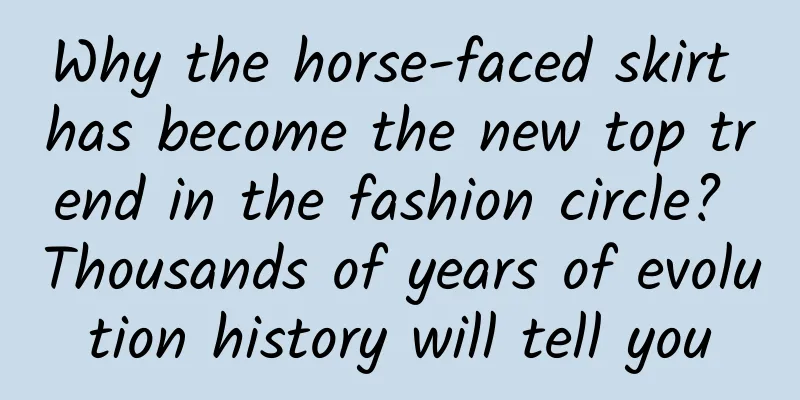A method for evaluating and classifying the value of active APP users based on the RFM model

Labs GuideWith the rapid development of the Internet, various products emerge in an endless stream, and the competitive pressure of products is gradually increasing. Users' requirements for Internet products are becoming increasingly stringent, and their attention to user experience is also increasing. Only products that meet user habits and are recognized by users will have an advantage in the competition. Therefore, it is very important to carry out refined management and operations for different types of users. The prerequisite for refined user operations is to classify users using appropriate standards, and then divide users into different groups, and then specify differentiated operation strategies for users in different groups. The RFM (Recency Frequency Money) model introduced in this article is a user grouping method commonly used in data analysis. It uses RFM to complete user grouping, and then implements different operation strategies for different users to achieve refined user operations. Part 01 Overview of RFM ModelThe RFM (Recency-Frequency-Monetary) model is an important tool and means to measure customer value and customer profitability. It is widely used in consumer products, where R represents the time interval between the last consumption, F represents the number of consumptions within a specific time range, and M represents the total consumption within a specific time range. For non-consumer products, this definition is no longer applicable. From the perspective of user activity and behavior, the RFM model can be transformed to define R as the number of days between the last active consumption, F as the number of active days within a certain time range, and M as the value score within a certain time range. The value score can be calculated using the user's important behaviors in the product. Using the three indicator dimensions of R, F, and M, users can be divided into eight value types: important value users, important development users, important retention users, important retention users, general value users, general development users, general retention users, and general retention users. These can be used to perform refined operations on users. The overall process is shown in Figure 1. Figure 1 Overall process of user value assessment and classification method Part 02 User data acquisition moduleThe client login interface is used to report data and count the details of user active data. The client tracking interface is used to report data and count the details of user access behavior data on the client. User active data and user behavior data are aggregated to obtain user data sets. The specific acquisition process is shown in Figure 2. Figure 2 User data acquisition process Part 03 RFM indicator calculation moduleThe calculation of RFM index is shown in Figure 3. After obtaining the user data set (user active data, user behavior data), the user active data is used to calculate the number of days between the user's last active time and the number of times the user is active within a specific time range (nearly N days). Using user behavior data, calculate the user's usage of specific functions within a specific time range (nearly N days). The functions here can be customized according to product features (as shown in Table 1). For example, the functions can be generally divided into two categories: core functions and additional functions. The core functions include commenting, liking, forwarding and sharing, adding to shopping carts, placing orders, etc. Additional functions include participating in lucky draws, participating in check-in activities, participating in user surveys, etc. The type and quantity of functions are adjusted according to the actual product situation and operation goals. The R index score is calculated using the number of days between the last active user and the rules shown in Table 2 (the score division rules here can also be adjusted according to actual conditions). When the number of days between the last active user is 21 days or more, the score is 0; when the number of days between the last active user is 11 to 20 days, the score is 20; when the number of days between the last active user is 6 to 10 days, the score is 60; when the number of days between the last active user is 4 to 5 days, the score is 80; and when the number of days between the last active user is less than 3 days, the score is 100. The number of times a user is active within a specific time range (nearly N days) is used, and the F index score is calculated using the rules shown in Table 3 (the score division rules here can also be adjusted according to actual conditions). When a user is active 1 to 2 times, the score is 20 points; when a user is active 3 to 5 times, the score is 40 points; when a user is active 6 to 8 times, the score is 60 points; when a user is active 9 to 15 times, the score is 80 points; when a user is active more than 16 times, the score is 100 points. Using the user's usage data on specific functions within a specific time range (nearly N days), the M indicator score is calculated using the rules shown in Table 4 (the score division rules here can also be adjusted according to actual conditions). When the user uses i core functions and j additional functions, the score for this item is (80×i/I)+(20×j/J), and the full score for this item is 100 points. Figure 3 RFM indicator calculation process Table 1 Function usage examples Table 2 R index scoring rules Table 3 F index scoring rules Table 4 M index scoring rules picture Part 04 RFM model building moduleAs shown in Figure 4, after the RFM index is calculated, the user's RFM feature set is formed. In the RFM model construction module, the three indicators R, F, and M need to be used to divide users into different categories. In this part, the threshold of each indicator needs to be calculated first. Based on the RFM feature set of the entire user, the mean of the three indicators R, F, and M of all users is calculated, and the mean is used as the threshold of each indicator. Figure 4 RFM indicator calculation process Part 05 User value assessment and classification moduleAfter the RFM model is built, the model can be used to classify users. The user classification criteria are shown in Table 5: (1) When the user's R, F, and M indicators are all high, the user is classified as an important value user; (2) When a user's R and M indicators are high but the F indicator is low, the user is classified as an important development user; (3) When the user's F and M indicators are high and the R indicator is low, the user is classified as an important retention user; (4) When the user's M index is high and the R and F indexes are low, the user is classified as an important retention user; (5) When the user's R and F indicators are high and the M indicator is low, the user is classified as a general value user; (6) When the user's R index is high and the F and M indexes are low, the user is classified as a general development user; (7) When the user's F index is high and the R and M indexes are low, the user is classified as a general retention user; (8) When the user's R, F, and M indicators are all low, the user is classified as a general retention user. Table 5 User value classification rules From the classification rules, we can see that: the M index determines whether a user is an important user; when the user's usage interval is short and the frequency is high, the value is high; when the user's usage interval is short and the frequency is low, the user development operation strategy can be focused on; when the user's usage interval is long and the frequency is high, the user retention operation strategy can be focused on; when the user's usage interval is long and the frequency is low, the user may be lost, and the retention operation strategy needs to be focused on. By using the user value evaluation and classification results, targeted operation strategies can be formulated for different types of users to achieve refined user operations. |
<<: Android uses JobScheduler to perform background tasks
>>: iOS 18 is coming, the biggest update ever!
Recommend
Android advanced View event distribution mechanism and source code detailed explanation
[[418059]] This article is reprinted from the WeC...
GlobalPetrolPrices: In March 2022, China's oil prices ranked 61st among 170 regions, 0.75 yuan higher than the average of 8.52 yuan.
From 24:00 on March 31, the domestic gasoline and...
The latest flood forecast for 2020: the water level in the middle reaches of the Yangtze River is expected to rise again, and the water level of Poyang Lake is still above the warning level!
According to news around 22:00 on July 15, the wa...
Behind the recall: Who is hacking the iPhone 6 Plus?
Ever since Apple released the iPhone 6 and iPhone...
Zhihu Promotion and Operation: How to become a Zhihu celebrity with millions of likes?
How to become a Zhihu celebrity with millions of ...
Why is Shanghai not called Xiahai? There is Shaanxi, where is East Shaanxi? How did the names of the provinces come from?
Mixed Knowledge Specially designed to cure confus...
The fastback shape is the highlight. The new Jingxuan appearance concept map is exposed
The new generation of Mitsubishi ASX has been exp...
Chongqing has its first imported case of monkeypox. Do we need to worry?
Yesterday, Chongqing City confirmed a case of mon...
What are the functions of the Lanzhou Amusement Park mini program? How much does it cost to develop a group buying app for a children’s playground?
The mini program has been online for more than 5 ...
Why do you have to wait half a year to donate whole blood? Things you may not know about voluntary blood donation
At the free blood donation vehicle in front of th...
Can the killer whale, the king of the sea with the "strongest brain", create marine civilization?
Life originated in the ocean, but civilization wa...
Why does this new material developed from "chemical disorder" become a "treasure alloy"?
Recently, the article "Liquid Metal for the ...
2015 App Operation and Promotion Strategy (Full Version)
The basic tone of the APP operation and promotion...
Which specific reports should I look at to analyze Baidu bidding account data?
Recently, I have often come into contact with som...
What are the functions of the Lanzhou Auto Repair mini program? How to make a WeChat auto repair mini program?
According to statistics, the number of cars in my ...









